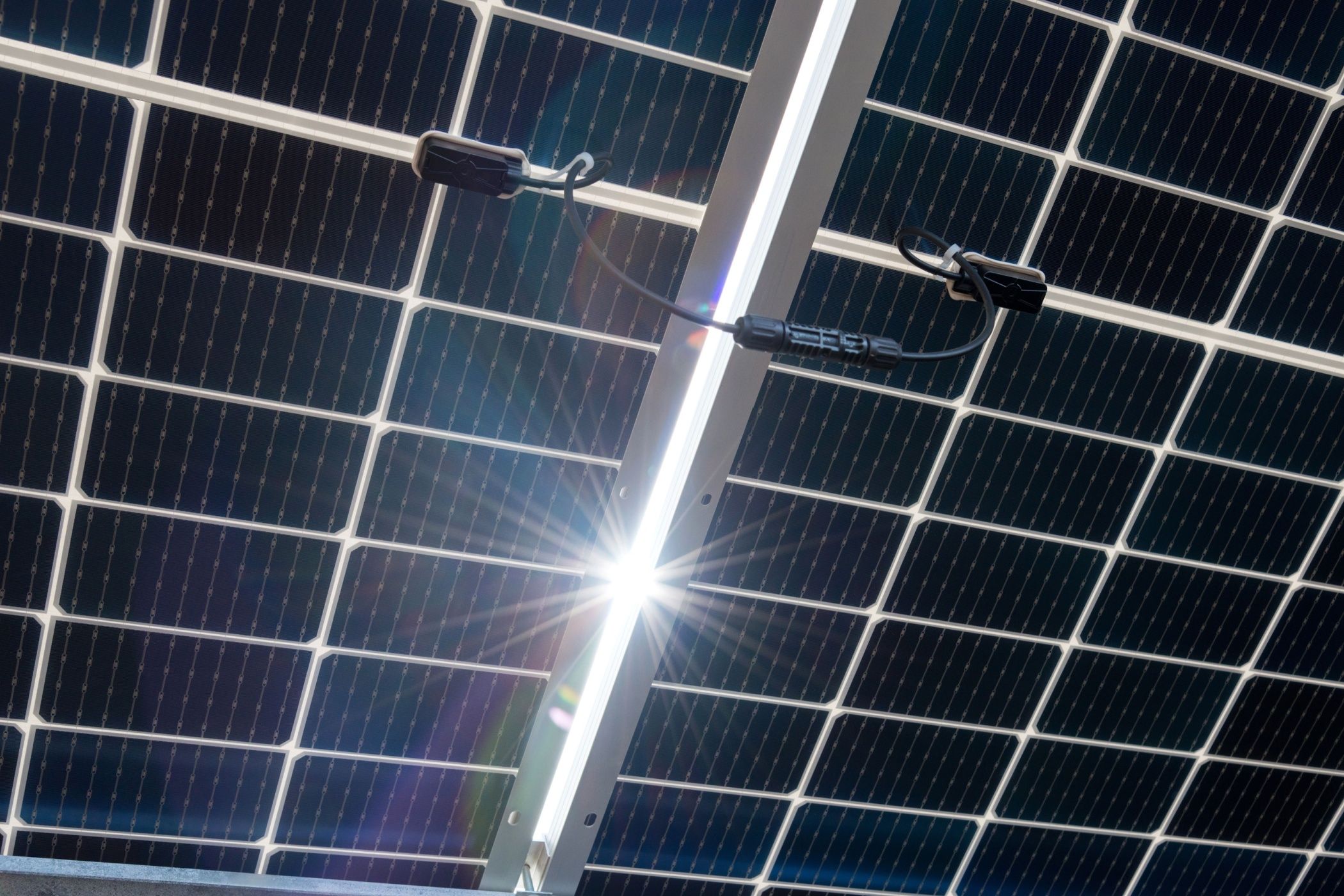Key Takeaways
- Bifacial panels absorb sunlight from both sides, potentially producing up to 30% more power.
- Bifacial panels work best over high-albedo surfaces like metal or snow.
- They cost more and require specific installation, but could be a better choice for certain situations.
Most of the solar panels you’ve probably seen are installed snugly against a surface like a roof, but it turns out if you’ve got the space to stand those panels off a little, you can double-dip on solar energy, which is where “bifacial” or “bilateral” solar panels come into the picture.
What Makes Bifacial Panels Different?
Regular “monofacial” solar panels have an opaque back, and are designed to absorb and convert sunlight from one direction. As the name suggests, “bifacial” panels can absorb sunlight from both sides. They can do this because the panels have a clear back, letting the solar sells receive light from both sides of the panel.
How Much More Power Do They Make?
As with all solar installations, the exact amount of power you get depends on where you are in the world, and the geometry of your installation relative to the sun. In general, bifacial panels can make up to 30% more power than monofacial panels, all things being equal. At least, that’s the figure you’ll see from manufacturers, but it’s very much an “up to” claim and depends on everything being optimal.
Since bifacial panels recapture light that’s been reflected from the ground and objects underneath the panel, they work better when over something with a high albedo. That is, highly-reflective surfaces like metal or snow. If you have a roof with a high-albedo surface, that’s also a great case for using bifacial panels.
Bifacial panels can harvests more light in low-light conditions compared to monofacial panels as well, which makes them a better choice for parts of the world where sunlight might be too weak for regular panels to make sense.
Bifacial Panels Are Stronger and More Attractive
While it’s not true of every bifacial panel design, most panels of this type use a double-glass build that makes them tougher, and more resistant to degradation. It also makes them nicer to look at than traditional panels, but admittedly, that’s pretty subjective.
The Downsides of Bifacial Panels
You’ve probably already guessed it, but the main drawback of bifacial panels is that they cost more than typical monofacial panels. There are a few reasons for this, but since bifacial panels tend to use more expensive monocrystalline solar cells thanks to their improved efficiency, they’ll cost more than the average panel. Add to that the extra hardware and materials like glass, and it all adds up.
To benefit from reflected light, bifacial panels have to be installed on standoffs from the ground or other surface they’re mounted above. So that hardware increases the complexity of the installation, and might not work for some people. The panels also need to be carefully angled to make the most of direct, reflected, and diffused sunlight for as much of the day as possible.
Should You Buy Bifacial Solar Panels?
As you can likely tell, whether bifacial solar panel technology is the right option largely depends on your situation. If you have lots and lots of surface area for solar panels, then it might be cheaper to simply cover that area with cheaper monofacial panels. If you’re limited on space, you may need the extra power production capabilities of bifacial panels.
If you’re going to install solar panels on metal stands on the ground anyway, then it makes sense to use bifacial panels to harvest as much sunlight as possible, especially if you have a high-albedo surface to mount them over and strong sunlight.
If you decide to get a professional quotation on a solar installation, it’s good to compare the cost of both type of panel, if you have the option. Ultimately, it’s about dollars per watt and how much space you have, or where you want to mount your solar panels, but it’s good to be aware that bifacial panels are an option!





